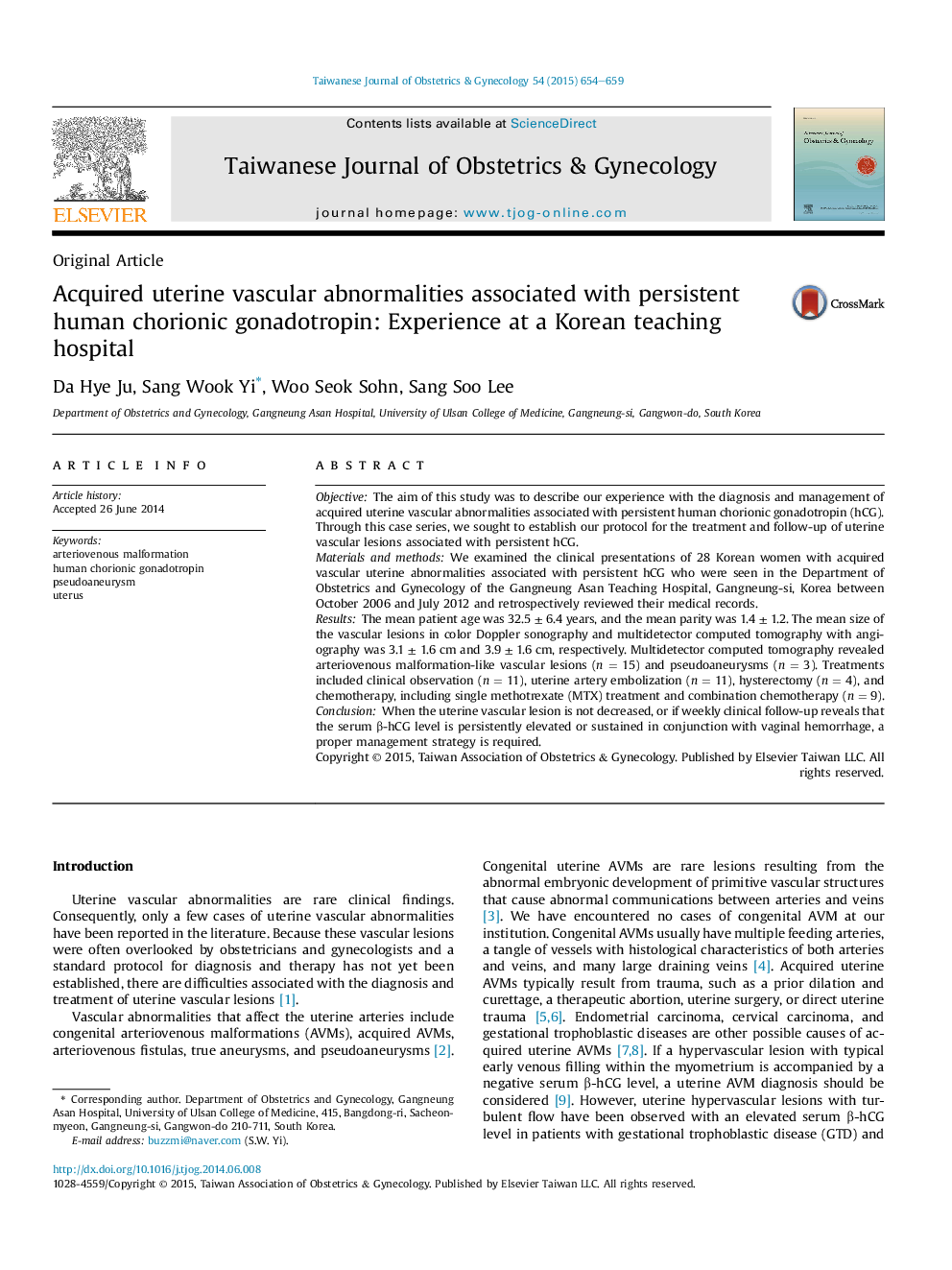| Article ID | Journal | Published Year | Pages | File Type |
|---|---|---|---|---|
| 3975232 | Taiwanese Journal of Obstetrics and Gynecology | 2015 | 6 Pages |
ObjectiveThe aim of this study was to describe our experience with the diagnosis and management of acquired uterine vascular abnormalities associated with persistent human chorionic gonadotropin (hCG). Through this case series, we sought to establish our protocol for the treatment and follow-up of uterine vascular lesions associated with persistent hCG.Materials and methodsWe examined the clinical presentations of 28 Korean women with acquired vascular uterine abnormalities associated with persistent hCG who were seen in the Department of Obstetrics and Gynecology of the Gangneung Asan Teaching Hospital, Gangneung-si, Korea between October 2006 and July 2012 and retrospectively reviewed their medical records.ResultsThe mean patient age was 32.5 ± 6.4 years, and the mean parity was 1.4 ± 1.2. The mean size of the vascular lesions in color Doppler sonography and multidetector computed tomography with angiography was 3.1 ± 1.6 cm and 3.9 ± 1.6 cm, respectively. Multidetector computed tomography revealed arteriovenous malformation-like vascular lesions (n = 15) and pseudoaneurysms (n = 3). Treatments included clinical observation (n = 11), uterine artery embolization (n = 11), hysterectomy (n = 4), and chemotherapy, including single methotrexate (MTX) treatment and combination chemotherapy (n = 9).ConclusionWhen the uterine vascular lesion is not decreased, or if weekly clinical follow-up reveals that the serum β-hCG level is persistently elevated or sustained in conjunction with vaginal hemorrhage, a proper management strategy is required.
